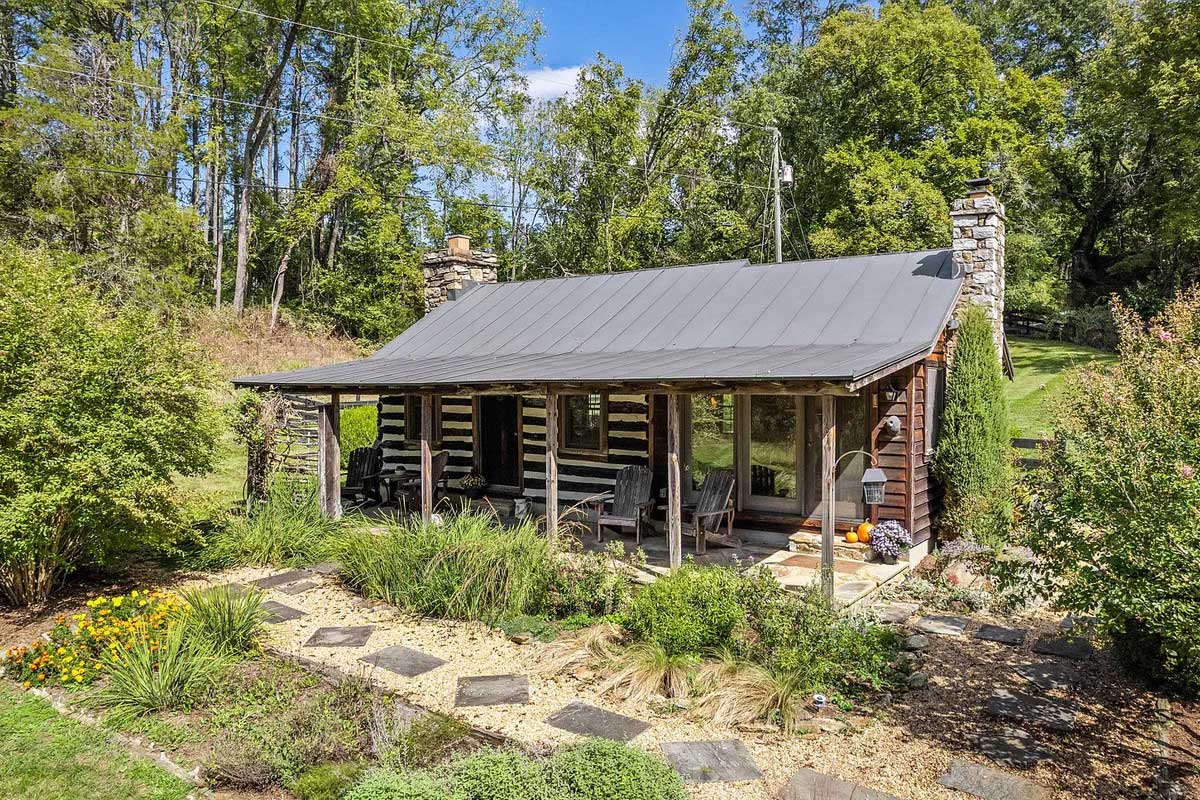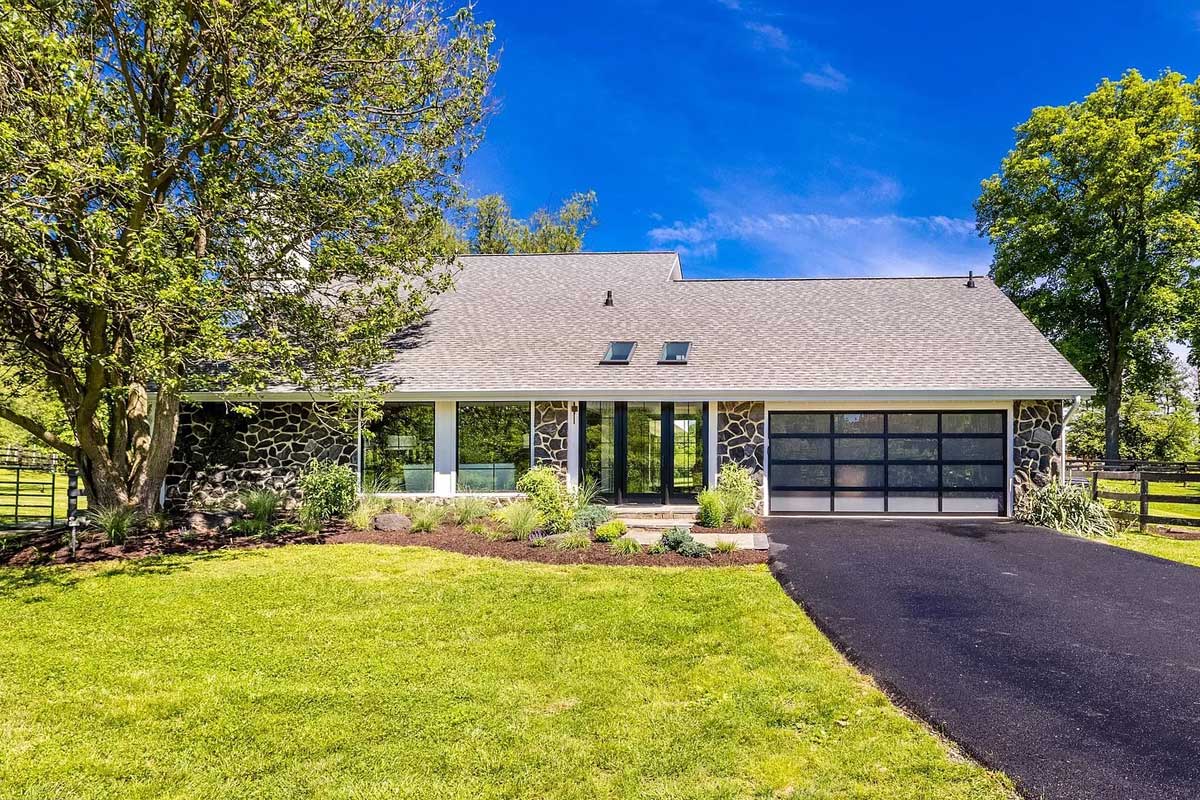If someone asked you to bet on where in the U.S. Amazon might choose to build a second headquarters, your thoughts might leap to a lot of places: New York, of course. Perhaps Chicago, a top city in the middle of the country. Maybe Boston or Austin, up-and-coming tech centers.
Actually, if someone asked you to bet, it would be kind of an unfair contest—because the “city” Amazon ended up picking didn’t exist yet. When they told you the answer was National Landing, your response would likely be, “What is that?” And when they explained—Crystal City, plus parts of Pentagon City and Potomac Yards—you’d probably refuse to pay up.
It makes little intuitive sense, yet it happened. Despite the many YouTubed prostrations and public gift-giving of legions of non-Virginian governors and mayors, Amazon picked a relatively undeveloped section between downtown Arlington and Alexandria. Suddenly, eyes trained on an imaginary city in the not-all-that-famous region of Northern Virginia.
But the imaginary city is quickly becoming real before our very eyes. It’s been about a year since the project broke ground, and in November, amid swinging cranes and rising steel, the developers of National Landing, JBG Smith, hosted Gov. Ralph Northam in a tour of the emerging skyline, its first phase of development set to be complete in 2023.
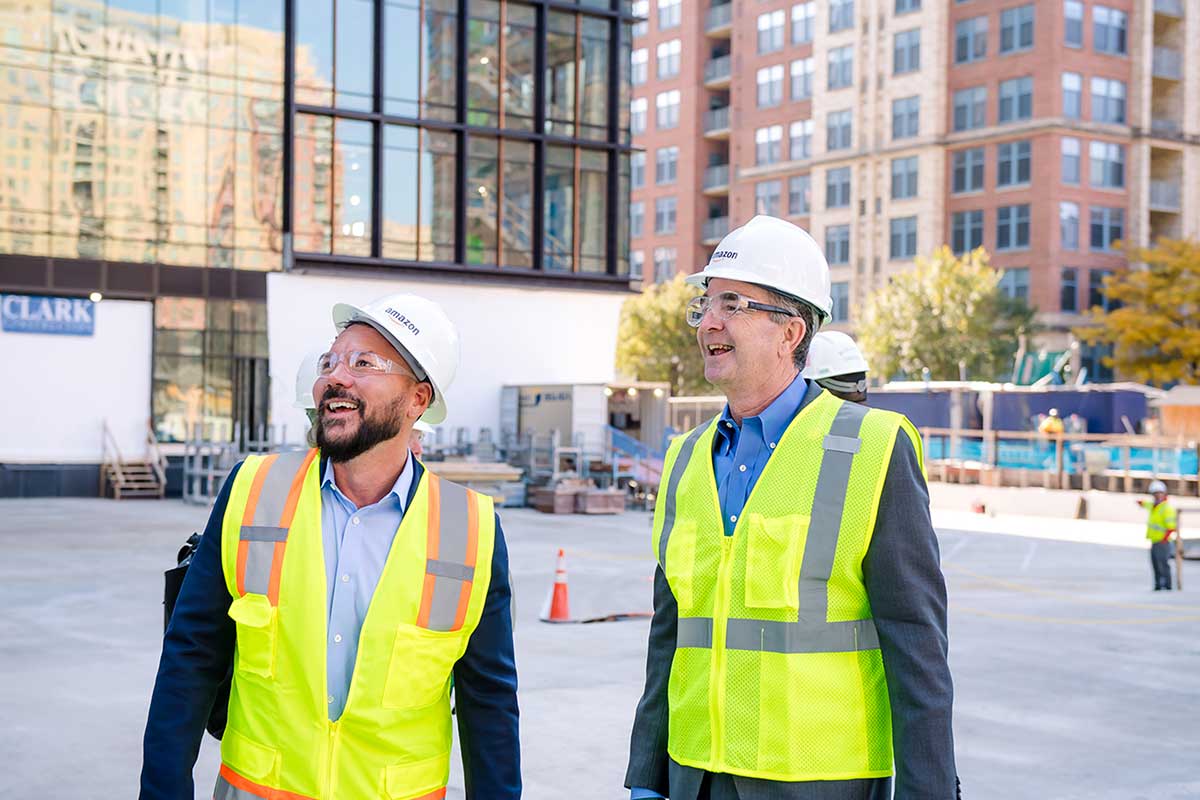
The question presents itself: What is National Landing, exactly? A lot of the conversation has revolved around jobs, jobs, jobs. (And there are plenty of them; 25,000 to be exact.) But that’s only a small part of the picture of how the project could change our understanding of Northern Virginia. It’s been touted as a new kind of cultural and economic capital for our region, one shaped by Amazon’s needs. If you’re interested in how Amazon could reshape our region, it’s worth understanding what our region had to build to land them.
It’s an underdog story that starts with a small team of local business-improvement officials who had neither the clout nor the cash of most of their competitors. Instead, they figured out what Amazon was really looking for and quietly began the process of shaping a city to fit those needs.
“One of the things we realized was [that] we weren’t going to see an $8 billion proposal,” says Victor Hoskins, economic development director of Fairfax County; he served in that role for Arlington County at the time the deal was made. Hoskins was part of the little team that pulled off the biggest economic development deal in recent history. The core group was made up primarily of him; Christina Winn, his business investment director; and Stephanie Landrum, economic development director of Alexandria.
While New York and other large cities offered multimillion-dollar deals in tax breaks and development bonuses, Arlington did not have those kinds of assets to swing around. Instead, the team confidently walked up to the table and set down a smaller pile of cash than everyone else.
“The proposal for $750 million really kind of surprised everyone,” Hoskins says.
But his team thought they knew something the other states didn’t. “It wasn’t money [Amazon was] looking for; it was a solution to their problem,” Hoskins says. “It was, how did they keep their company growing?”
How Brains Beat Billions
The approach to National Landing was formed around that concept, which makes how they managed to pull it off so interesting: They created a vision for a city as a kind of innovation beacon on the hill, custom-built for Amazon’s needs.
That doesn’t mean Jeff Bezos is getting his own private motorized walkway churning through the streets of NoVA, with bellhops lifting a red velvet rope for him as he alights at a stop in Ballston or Del Ray. It’s deeper than that, and it has to do with mobilizing the Northern Virginia workforce.
“We want to produce the kind of environment they have in Silicon Valley,” Hoskins says, making National Landing a new job hub for all of Northern Virginia.
Hoskins realized that National Landing could become a kind of capital of what some are calling a burgeoning Silicon Valley East. The influential company America Online once grew here, with much of the foundations of the early internet coming from Northern Virginia. In Sterling, there’s a street called Warp Drive, an anchor for commercial space exploration. The federal government is the source of a lot of tech development, with the Department of Defense spending over $100 billion in cybersecurity. NoVA is also the No. 1 place in the world for data centers, five times the size of Silicon Valley’s, which creates an infrastructure that can undergird Amazon’s cloud computing.
“There were a couple of statistics we have locally that we knew would be difficult for other jurisdictions around the country, throughout North America, to match,” Hoskins says.
One of the biggest: NoVA’s unusually well-educated populace. In Arlington, 73 percent of the workforce has a bachelor’s or greater degree. In Fairfax County, it’s 61 percent. Together, that’s more than a million people.
“That’s a big group of educated folks. If you look at the whole region, it comes out to about 54 percent. Compare that to other regions in the country, which are about 24 percent,” Hoskins says. “So we really outpace the average for the country for educational attainment.”
But what really excited his team was when they realized the number of technical degrees held by locals.
“There was only one other place in the country that had more engineers at the time of the application than we did,” Hoskins says. That was New York City. It wasn’t even Silicon Valley, which came in third.
“We had never, ever dug down and really looked at those statistics that way until that point. And boy, were we happy. And boy, were we surprised. And Amazon was impressed.”
Instead of presenting Amazon with a multibillion-dollar proposal, Hoskins and his team doubled down on the workforce issue. They may not have been able to get the state to commit to pouring billions directly into Amazon’s coffers, but setting aside millions for investment in STEM education? That benefited the state whether Amazon came or not. Thus, a major part of National Landing will be the presence of Virginia Tech’s innovation campus at its southern tip, bringing the state’s top STEM students into the downtown. This complements expansion in the NoVA community college system, George Mason University, and a new campus outpost of University of Virginia, in addition to the presence of the nation’s top STEM high school in Fairfax County, Thomas Jefferson High School for Science and Technology.
“The idea is to create a place where we’re just producing so much talent, and that talent is drawing the companies. And those companies are creating more innovation,” Hoskins says. “It’s a kind of cycle that you’re trying to create.”
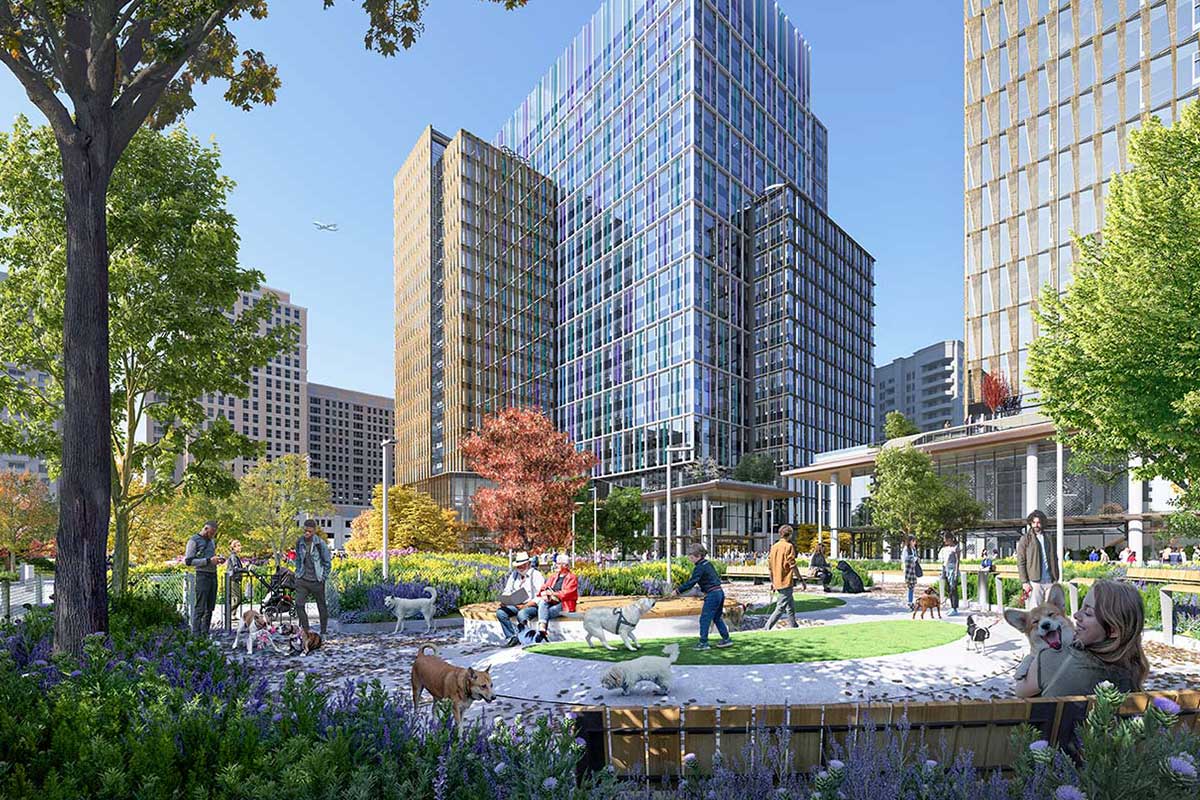
A City from Thin Air
While complex negotiations got underway with officials and politicians at the state level to ensure the education system got the funding it needed, that wasn’t the only trick that the local team had to pull off to satisfy Amazon’s demands. The other was simply population size. Northern Virginia doesn’t have an urban center that fit what Amazon said they were looking for: at least 1 million people.
Arlington doesn’t have a million people. Alexandria doesn’t, either. But Northern Virginia has 6 million.
This is where NoVA’s unusually decentralized development came in handy. Hoskins considered different combinations of land across Fairfax, Alexandria, and Arlington. He initially approached a group of four developers centered around Rosslyn, the most urbanized choice.
But his instincts led him elsewhere.
He contacted one of the developers on the side, JBG Smith, which possessed a large amount of land centered around the less-developed Crystal City, between Rosslyn and Alexandria. Matt Kelly, CEO of JBG Smith, had his doubts as to their chances of success but figured, Why not go for it?
“We thought, This is such a jump ball; who knows where this is going to go? Somebody’s probably got the inside track for all we knew. Many companies, you know, will run a process having already made up their mind,” Kelly says. “But even if you had a 5 percent chance of winning, being one out of 20 [on the short list]—you apply that 5 percent to the value ultimately prevailing, and it’s worth it, even the opportunity cost.”
Hoskins wanted them to simultaneously develop a second proposal based on that broad area of land. The total area JBG Smith owned had the population they needed, and it had the bones for development. It had a national airport. It had a major interstate highway in Route 1. It had three metro stops in quick succession, with a short drive into DC. And the area had lost thousands of jobs in recent years, due to the relocation of federal agencies, leaving entire office buildings vacant and ready for development. It just wasn’t the single named place Amazon seemed to have in mind. So Hoskins’s team decided to make up a name.
“As we went through the process, we realized, Oh, this is not Arlington; this is not Alexandria; this isn’t Crystal City,” Hoskins says. “Landrum and Christina were talking one night, and they were trying to figure out what to call it. And so they said, ‘Well, we have a national airport. Let’s call it National Landing.’”
Of course, Kelly and his team at JBG Smith had no idea what to think when they first saw a map labeled “National Landing.” “We thought, Where’s that name come from? We hadn’t seen that before,” Kelly says. “And they said, ‘Well, we needed a way to really describe this place because it’s no one jurisdiction. It’s part of the Pentagon City, parts of Potomac Yard, and parts of Crystal City. And that’s a mouthful.’”

JBG Smith’s marketing team picked it up and ran with it. But there’s still no perfect term for what National Landing is, exactly. Hoskins keeps it simple and technical: “I think it’s a submarket,” he says, with Crystal City, Potomac Yards, and Pentagon City as neighborhoods. But its future in relation to Arlington and Alexandria seems increasingly clear.
The location had one other thing going for it. Alexandria and Arlington have always been linked as population centers within Northern Virginia. But they’ve always been clearly separate developed pockets, with Pentagon City and Crystal City not matching the development of the Ballston-Rosslyn corridor in Arlington or the downtown area of King Street and Del Ray in Alexandria. The National Landing concept could create a third residential-retail center about equidistant between the two hot spots—making for a whole new urban center in Northern Virginia, competitive with other cities vying for Amazon.
That nails the idea, Hoskins says, noting how the Innovation Campus above Alexandria and HQ2 beneath Rosslyn could pull all three sites together. “I think they will merge together eventually,” he says.
With those two factors satisfied, they had a proposal that interested Amazon. Northern Virginia made the list of 20 finalists.
The Dream Becomes Real
Suddenly, you had arguably the biggest promise for economic development in modern history centered around a development project. And that gets things done, wrangling state and federal forces to reshape the infrastructure and create the ideal environment for a downtown to grow.
This was also a convenient move on JBG Smith’s part; they’d long planned to redevelop the area and now had the ability to do so, regardless of whether Amazon actually came through. (Kelly notes that much of their original plan, pre-Amazon, remained intact.)
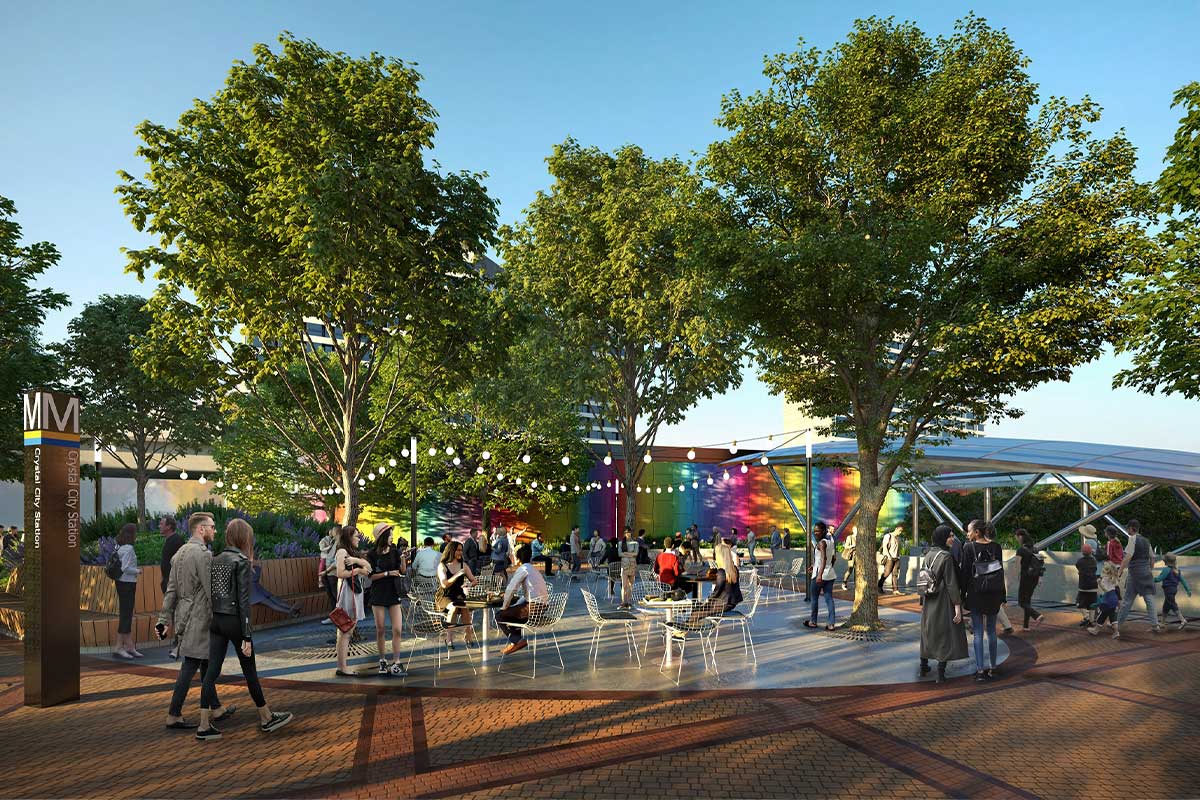
A bridge is being built to connect the downtown of National Landing directly to a terminal at Reagan National Airport, creating foot traffic. The elevated Highway One currently bisects National Landing into separate halves, but it will be lowered to ground level and given a boulevardlike, downtown atmosphere. And each of the three metro stops—Pentagon, Pentagon City, and Crystal City—will be the focus of development to maximize walkability, not unlike the environment created by the Clarendon-Ballston series of stops in what is now downtown Arlington. A new metro stop (always the most coveted development project) in Potomac Yards will extend that corridor into Alexandria.
A development mindset gave Hoskins’ team an advantage both professionally, in being able to involve Amazon in the process, and personally. The two key figures that Amazon sent out to determine the HQ2 location were Holly Sullivan, their director of business development, and John Schoettler, director of real estate. As opposed to many of the politicians and state-level bureaucrats Amazon had been working with, Hoskins’ team had a natural connection with them.
“Holly Sullivan is, fortunately, from the DC region—she actually lived in Montgomery County. And a lot of us had known her, you know, at a distance,” Hoskins says. “It was like being with a peer because she’s an economic development person…She knew what we were going through.”
It helped that the city was actually being built around the examiners whenever they visited NoVA.
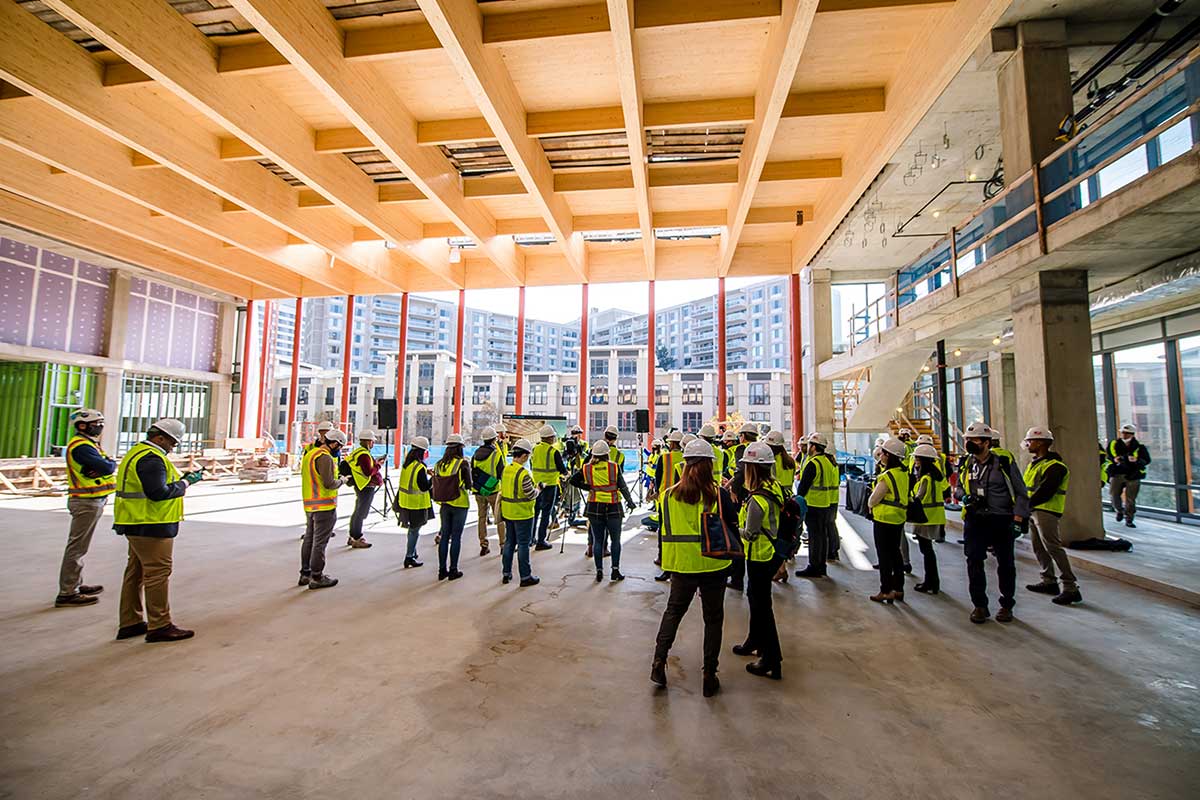
“We were saying, ‘We’re going to take down these overpasses, and we’re going to remove some of these ramps,’ but I didn’t realize that it was actually physically happening in the place that we were walking to,” says Hoskins. “And as we were walking there, they were removing these huge pieces of an old, unnecessary ramp. And by the time they came to tour the next time, that ramp was halfway down. So we were saying things, but they were actually manifesting as we were saying them, and I think that really excited Amazon—that we weren’t just saying what would happen. We were making it happen.” Amazon’s shiny new city on a hill was underway. Hoskins’ team had wined and dined the Amazon examiners; they felt like friends. Hoskins sent over the final 1,100-page proposal.
Then suddenly, everything went silent.
“There were a few weeks where we had not heard from them … it was radio silence,” Hoskins says. “It felt really long.”
He and his team threw themselves into other proposals to distract themselves, trying not to think about it. As long as they were busy, they were fine. But when it came to 6 o’clock on Friday, August turned into September, and nothing.
At last, Sullivan called them in November, telling them they had won—sort of. Amazon would split HQ2 between New York and Northern Virginia, to which Hoskins reacted with a harried but still overjoyed “OK!”
New City, New NoVA
Ultimately, Amazon got a city on their terms. Adam Sedo, director of Amazon corporate communications, confirmed to Northern Virginia that talent, education, and the ability to work with JBG Smith on National Landing are the primary reasons Amazon came to Virginia.
There are some legitimate concerns about that from some local businesses and residents. Crystal City Civic Association president Eric Cassel notes that new businesses and development can be a positive, while increased rent prices and traffic are worrying, but understandable. Amazon appears to have a sincere concern about affordable housing, investing millions and working with JBG Smith to maintain mixed-income residences in National Landing. And the influx of new transportation modes could help counter some traffic issues. Currently, Cassel’s team is in discussions with developers about preserving some of Crystal City’s existing structures, such as the underground shopping around metro stops.
Another factor that has made National Landing less controversial than New York is the fact that NoVA landed Amazon on the cheaper side. Unlike New York’s billions poured into gifts for Amazon, Virginia directed much of its economic investment into projects such as infrastructure and education that it will benefit from, too. Now, even the promise of Amazon’s arrival has reaped major economic awards for the state.
“Look at us now,” Hoskins says. He points to the fact that CNBC rated Virginia the top state to do business in for 2020 and 2021, with high marks for its workforce and educational attainment.
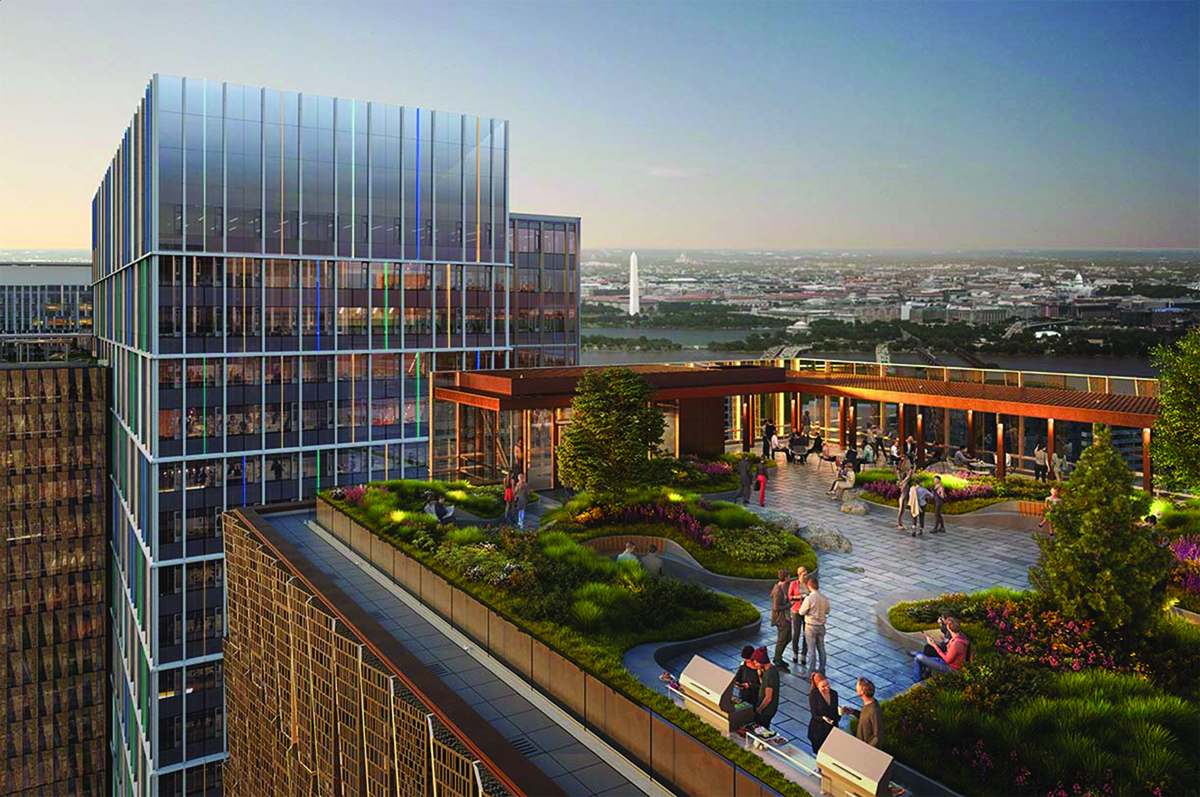
“The capital investment that has come into the commonwealth of Virginia in the last four years is over $77 billion. And that’s a lot of money,” Northam himself bragged to reporters on the rooftop of one of National Landing’s completed high-rises, just before he went on to tour the construction site. “And just to put that in perspective, the next higher administration’s capital investment was around $18 billion.”
Hoskins is even more optimistic. “We are moving toward where our potential could take us.”
Microsoft, Google, and Facebook have followed suit with new campuses in Northern Virginia. The mere idea of National Landing has begun to reshape its region, and Hoskins, now working for Fairfax County, says he still feels the reverberations of that success.
“I’m in Fairfax, but I’m still benefiting greatly from the fact that Amazon is there, because people who live in our county are actually going after jobs at Amazon,” Hoskins says. “And that’s pretty cool.”
This story originally ran in our March issue. For more stories like this, subscribe to our monthly magazine.



